The role of the nucleus accumbens core in impulsive choice, timing, and reward processing
- PMID: 20141278
- PMCID: PMC3909469
- DOI: 10.1037/a0018464
The role of the nucleus accumbens core in impulsive choice, timing, and reward processing
Abstract
The present series of experiments aimed to pinpoint the source of nucleus accumbens core (AcbC) effects on delay discounting. Rats were trained with an impulsive choice procedure between an adjusting smaller sooner reward and a fixed larger later reward. The AcbC-lesioned rats produced appropriate choice behavior when the reward magnitude was equal. An increase in reward magnitude resulted in a failure to increase preference for the larger later reward in the AcbC-lesioned rats, whereas a decrease in the larger later reward duration resulted in normal alterations in choice behavior in AcbC-lesioned rats. Subsequent experiments with a peak timing (Experiments 2 and 3) and a behavioral contrast (Experiment 4) indicated that the AcbC-lesioned rats suffered from decreased incentive motivation during changes in reward magnitude (Experiments 2 and 4) and when expected rewards were omitted (Experiments 2 and 3), but displayed intact anticipatory timing of reward delays (Experiments 2 and 3). The results indicate that the nucleus accumbens core is critical for determining the incentive value of rewards, but does not participate in the timing of reward delays.
(c) 2009 APA, all rights reserved.
Figures
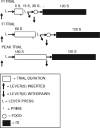




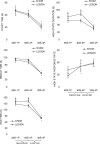
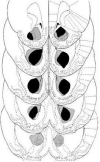

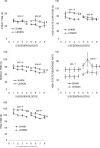
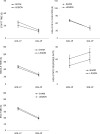
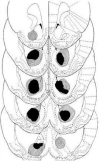


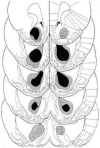
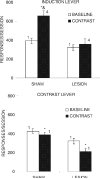
Similar articles
-
Nucleus accumbens and delay discounting in rats: evidence from a new quantitative protocol for analysing inter-temporal choice.Psychopharmacology (Berl). 2012 Jan;219(2):271-83. doi: 10.1007/s00213-011-2459-1. Epub 2011 Sep 6. Psychopharmacology (Berl). 2012. PMID: 21894486
-
Nucleus accumbens core lesions induce sub-optimal choice and reduce sensitivity to magnitude and delay in impulsive choice tasks.Behav Brain Res. 2018 Feb 26;339:28-38. doi: 10.1016/j.bbr.2017.11.013. Epub 2017 Nov 13. Behav Brain Res. 2018. PMID: 29146281 Free PMC article.
-
Lesions of the nucleus accumbens core modulate development of matching behavior.BMC Neurosci. 2014 Apr 30;15:55. doi: 10.1186/1471-2202-15-55. BMC Neurosci. 2014. PMID: 24886021 Free PMC article.
-
Limbic corticostriatal systems and delayed reinforcement.Ann N Y Acad Sci. 2004 Jun;1021:33-50. doi: 10.1196/annals.1308.004. Ann N Y Acad Sci. 2004. PMID: 15251872 Review.
-
Cognitive impulsivity in animal models: role of response time and reinforcing rate in delay intolerance with two-choice operant tasks.Neuropharmacology. 2010 Mar-Apr;58(4-5):694-701. doi: 10.1016/j.neuropharm.2009.11.007. Epub 2009 Nov 27. Neuropharmacology. 2010. PMID: 19945469 Review.
Cited by
-
Early Life Stress Associated With Increased Striatal N-Acetyl-Aspartate: Cerebrospinal Fluid Corticotropin-Releasing Factor Concentrations, Hippocampal Volume, Body Mass and Behavioral Correlates.Chronic Stress (Thousand Oaks). 2018 Jan-Dec;2:2470547018768450. doi: 10.1177/2470547018768450. Epub 2018 Apr 18. Chronic Stress (Thousand Oaks). 2018. PMID: 29963652 Free PMC article.
-
Individual differences in impulsive and risky choice: effects of environmental rearing conditions.Behav Brain Res. 2014 Aug 1;269:115-27. doi: 10.1016/j.bbr.2014.04.024. Epub 2014 Apr 24. Behav Brain Res. 2014. PMID: 24769268 Free PMC article.
-
Endocannabinoid-dependent modulation of phasic dopamine signaling encodes external and internal reward-predictive cues.Front Psychiatry. 2014 Sep 1;5:118. doi: 10.3389/fpsyt.2014.00118. eCollection 2014. Front Psychiatry. 2014. PMID: 25225488 Free PMC article. Review.
-
Environmental rearing effects on impulsivity and reward sensitivity.Behav Neurosci. 2013 Oct;127(5):712-24. doi: 10.1037/a0034124. Behav Neurosci. 2013. PMID: 24128360 Free PMC article.
-
Recent Insights into the Neurobiology of Impulsivity.Curr Addict Rep. 2014 Dec 1;1(4):309-319. doi: 10.1007/s40429-014-0037-4. Curr Addict Rep. 2014. PMID: 25431750 Free PMC article.
References
-
- Balleine B, Killcross S. Effects of ibotenic acid lesions of the nucleus accumbens on instrumental action. Behavioural Brain Research. 1994;65:181–193. - PubMed
-
- Barkley RA, Edwards G, Laneri M, Fletcher K, Metevia L. The efficacy of problem-solving communication training alone, behavior management training alone, and their combination for parent-adolescent conflict in teenagers with ADHD and ODD. Journal of Consulting and Clinical Psychology. 2001;69:926–941. - PubMed
-
- Belin D, Jonkman S, Dickinson A, Robbins TW, Everitt BJ. Parallel and interactive learning processes within the basal ganglia: Relevance for the understanding of addiction. Behavioural Brain Research. 2009;199:89–102. - PubMed

